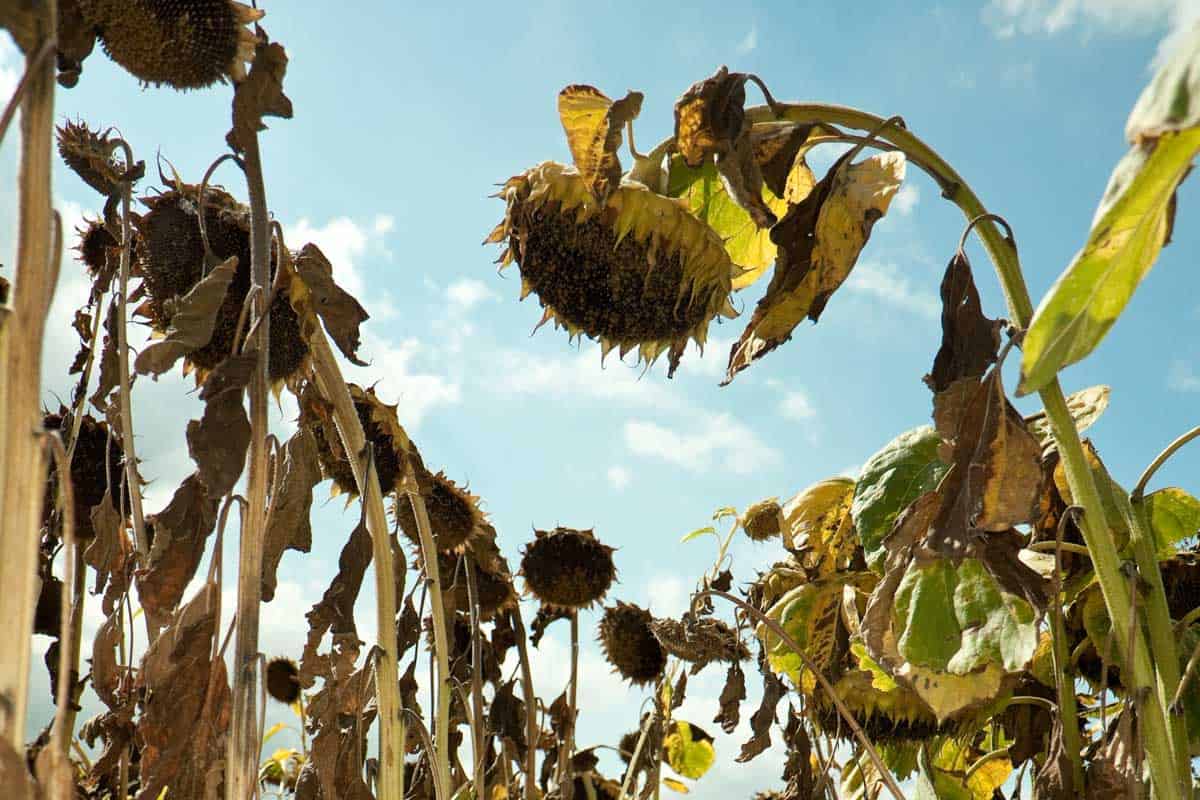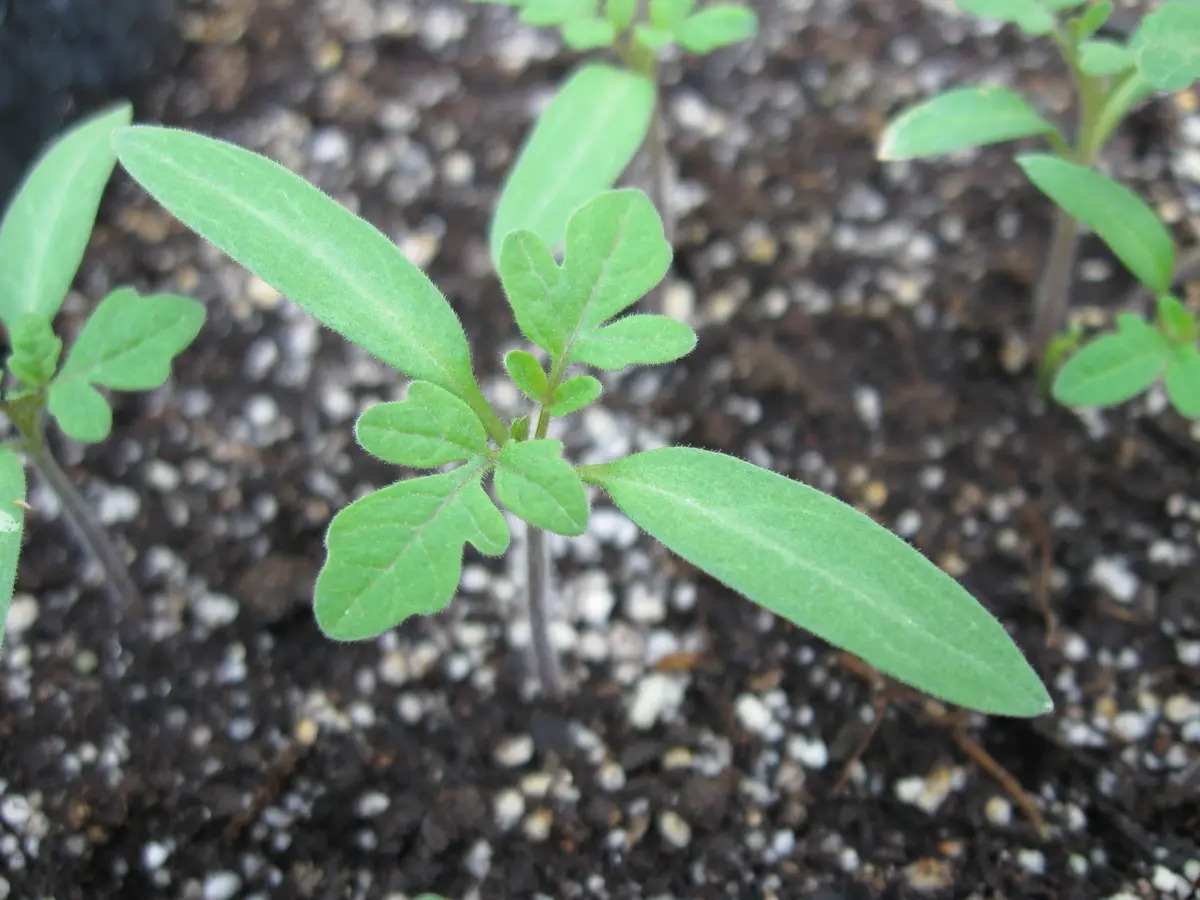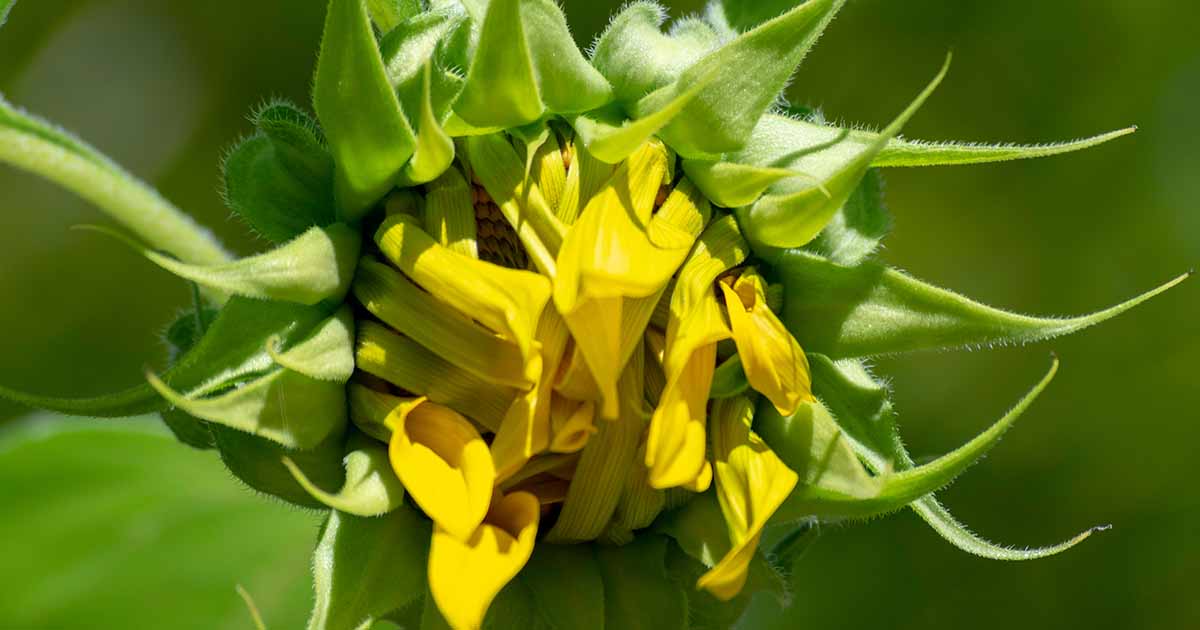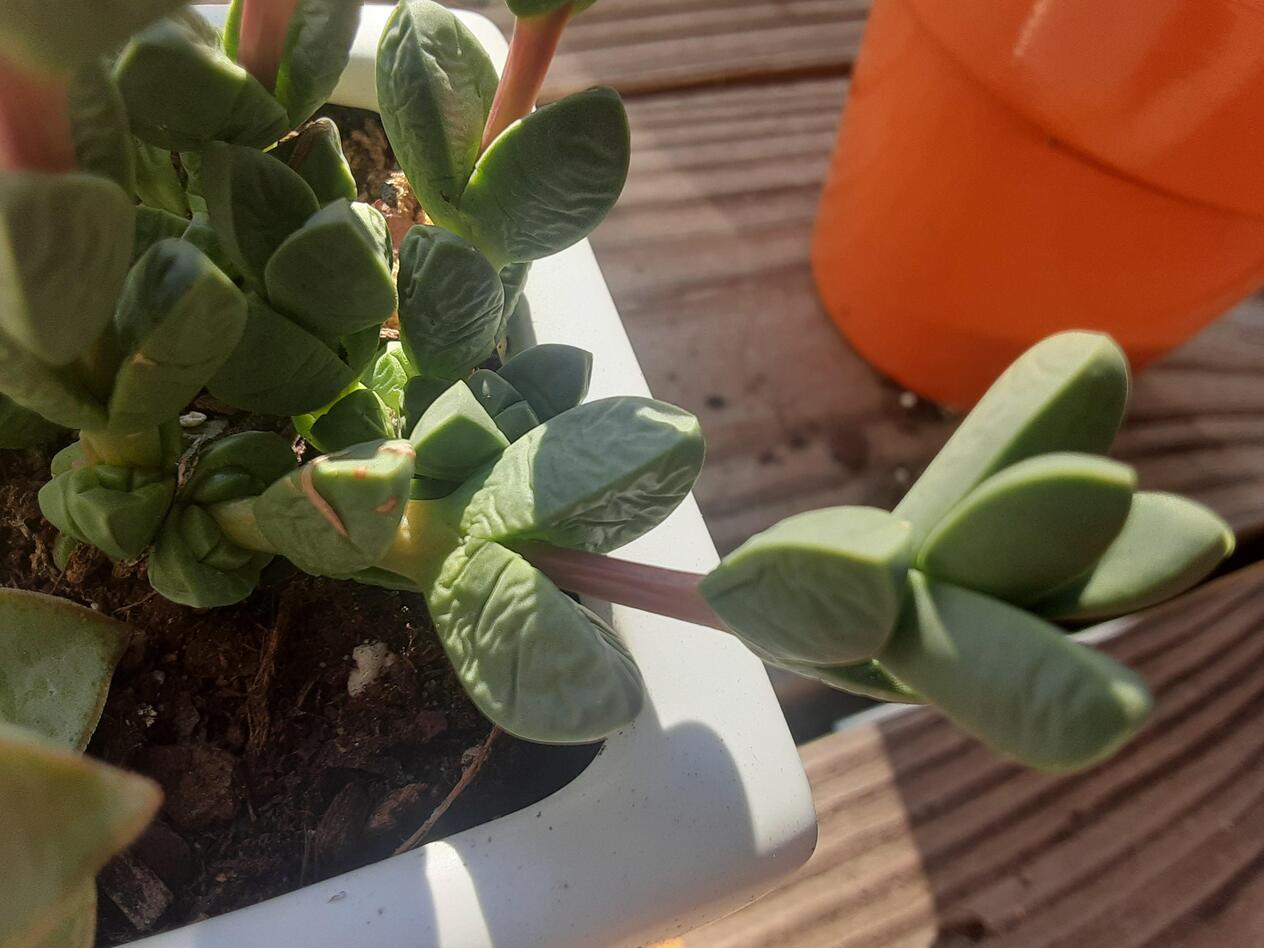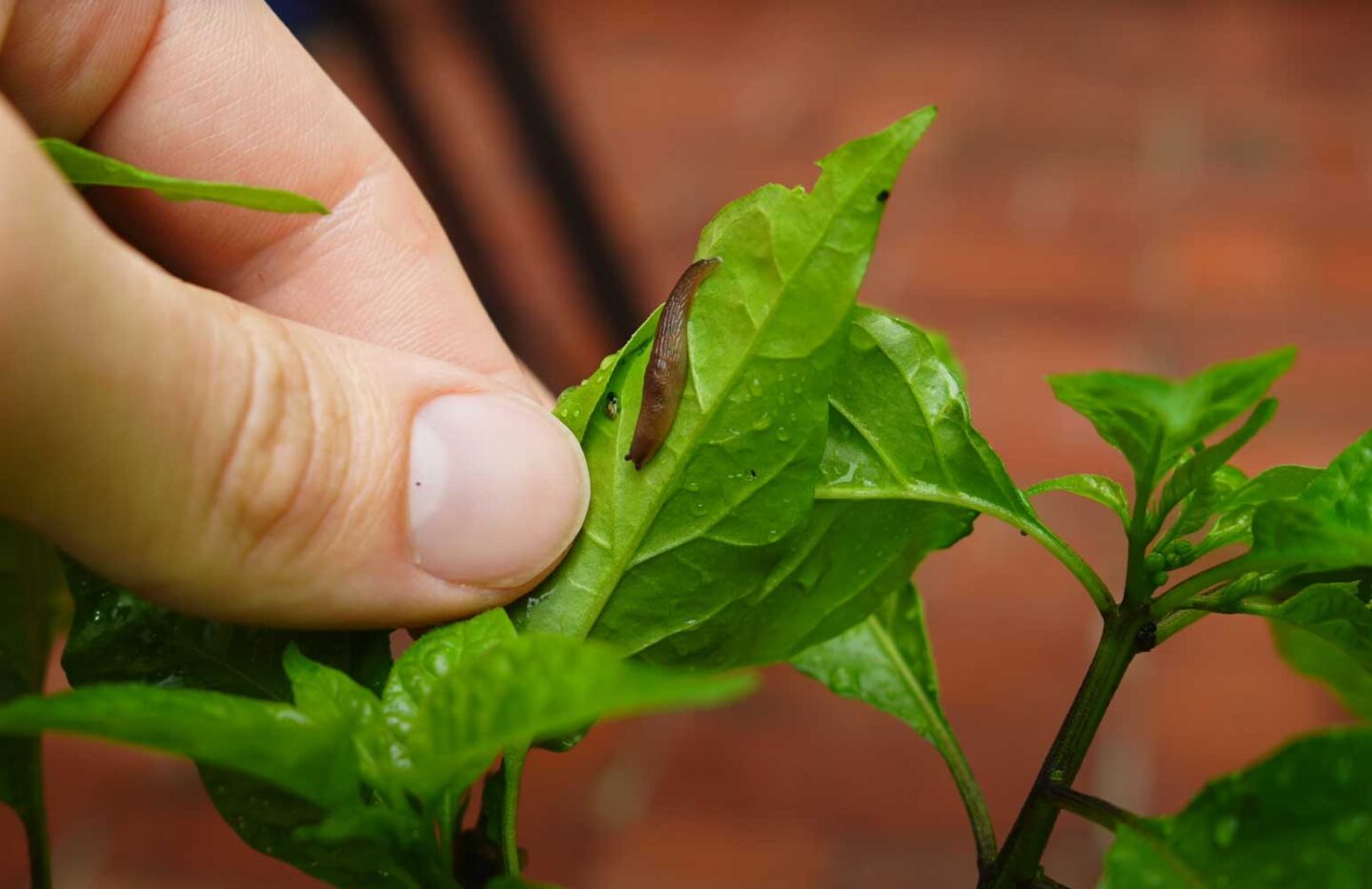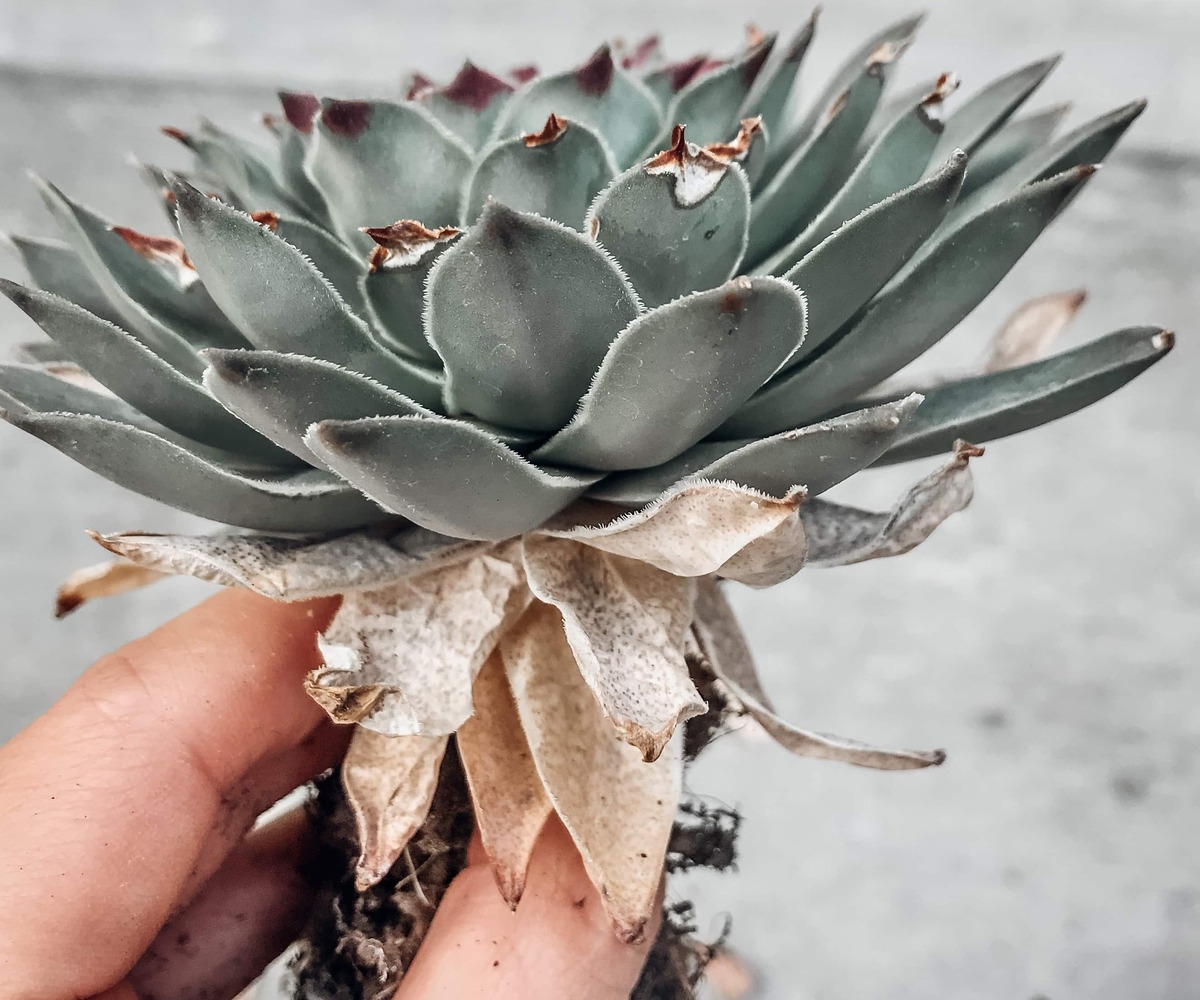Home>Gardening Techniques>Plant Care>Why Are My Seedlings Leaves Curling
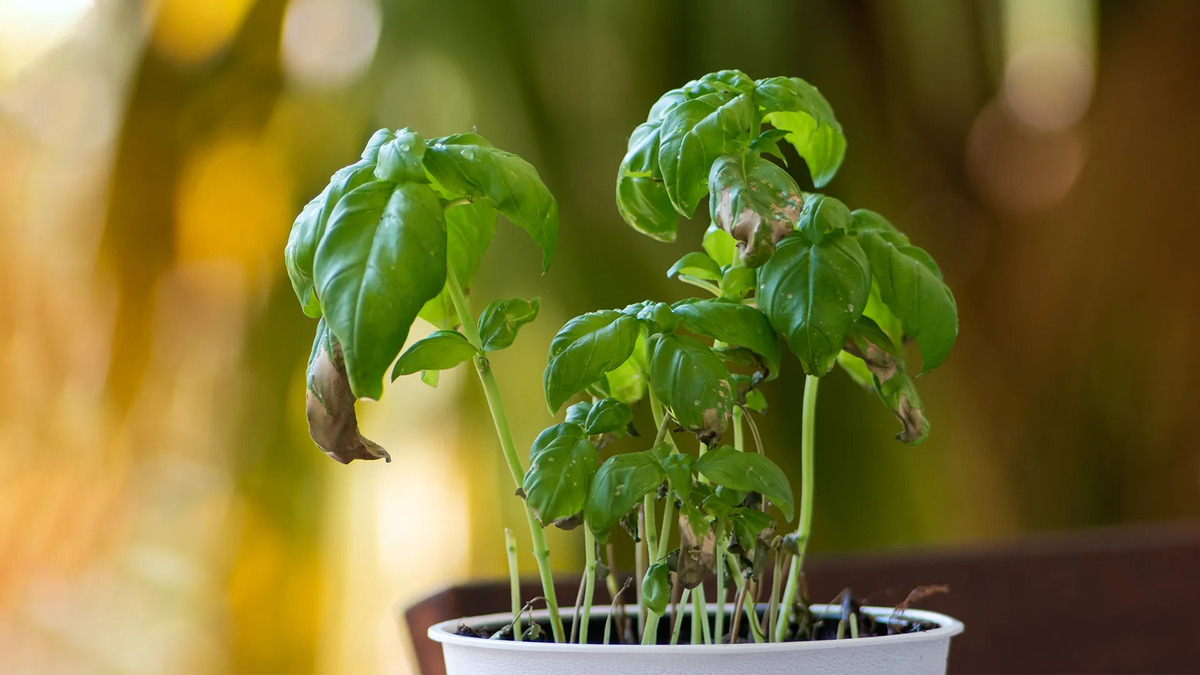

Plant Care
Why Are My Seedlings Leaves Curling
Published: January 6, 2024
Discover the reasons why your seedlings leaves are curling and learn essential plant care tips to prevent and address this issue.
(Many of the links in this article redirect to a specific reviewed product. Your purchase of these products through affiliate links helps to generate commission for Chicagolandgardening.com, at no extra cost. Learn more)
Table of Contents
- Introduction
- Understanding Seedling Leaves
- Possible Causes of Curling Leaves
- Insufficient Light
- Overwatering or Underwatering
- Temperature Stress
- Nutritional Deficiencies
- Pest or Disease Infestation
- pH Imbalance in Soil
- Genetic Factors
- How to Prevent and Treat Curling Leaves
- Providing Adequate Light
- Proper Watering Techniques
- Maintaining Optimal Temperatures
- Supplementing Nutrients
- Identifying and Treating Pest or Disease Issues
- Balancing Soil pH
- Conclusion
Introduction
Seedlings are delicate and vulnerable plants that require proper care and attention to ensure their healthy growth. As a plant enthusiast, nothing is more disheartening than seeing the leaves of your seedlings start to curl. Curling leaves can be an indication of underlying issues that need to be addressed promptly to prevent further damage to your precious plants.
Understanding the causes of curling leaves is crucial in order to implement effective solutions and provide the best care for your seedlings. In this article, we will explore the possible reasons behind this phenomenon and provide practical tips on prevention and treatment.
It is important to note that the specific causes and solutions for curling leaves can vary depending on the type of plant and environmental conditions. Therefore, it is essential to assess the unique needs and requirements of your seedlings while considering the information provided here as a general guide.
By arming yourself with knowledge and taking proactive measures, you can help your seedlings thrive and flourish, leading to vibrant and healthy plants in the long run.
Understanding Seedling Leaves
Before diving into the causes of curling leaves, it’s important to have a basic understanding of how seedling leaves function. Seedling leaves, also known as cotyledons, are the first leaves to emerge from a germinating seed. They provide temporary nourishment to the young plant until true leaves develop.
Cotyledons are typically thick and fleshy, serving as energy reserves for the seedling to grow and establish itself. These initial leaves are often different in appearance from the mature leaves that will eventually emerge. As the seedling develops, true leaves, which resemble the leaves of the plant’s adult form, begin to grow and replace the cotyledons.
Seedling leaves are essential for the process of photosynthesis, the conversion of sunlight into energy for plant growth. They also play a role in transpiration, the movement of water and nutrients throughout the plant. Healthy seedling leaves are upright, flat, and have a vibrant green color.
When seedling leaves start to curl, it is a sign that something is disrupting their normal structure and function. This curling can manifest in various ways, such as rolling upwards or curling downwards. It is crucial to identify the underlying cause of the curling leaves to effectively address the issue and restore the health of your seedlings.
It’s worth noting that while some level of curling may be normal for certain plant species or during specific stages of growth, significant and persistent curling is generally indicative of a problem that needs attention.
Now that we have a basic understanding of seedling leaves, let’s explore the potential causes of curling leaves and how to tackle them.
Possible Causes of Curling Leaves
When your seedling leaves start to curl, it’s important to investigate the potential causes and address them appropriately. Here are some common factors that may contribute to curling leaves:
- Insufficient Light: Lack of proper light exposure is a common cause of leaf curling in seedlings. If your plants are not receiving enough light, they may stretch and develop weak, floppy stems. Insufficient light can disrupt the photosynthesis process and result in curled leaves.
- Overwatering or Underwatering: Improper watering practices can lead to stress and cause leaves to curl. Overwatering can result in waterlogged roots, leading to root rot and poor nutrient absorption. On the contrary, underwatering can cause dehydration and stress, resulting in curled leaves as a defense mechanism.
- Temperature Stress: Extreme temperatures, both hot and cold, can put stress on your seedlings and cause leaf curling. High temperatures can accelerate water loss and lead to wilting, while cold temperatures can hinder proper nutrient uptake and result in curled leaves.
- Nutritional Deficiencies: Inadequate nutrient levels in the soil can manifest as curled leaves in seedlings. Common deficiencies include nitrogen, iron, magnesium, and potassium. These nutrients are vital for overall plant health and proper leaf development.
- Pest or Disease Infestation: Insects and plant diseases can significantly impact the health of your seedlings, causing leaves to curl. Aphids, spider mites, and fungal infections are common culprits. It’s important to regularly inspect your plants and take appropriate measures to prevent and manage pest and disease issues.
- pH Imbalance in Soil: Imbalanced soil pH can affect nutrient availability and uptake, leading to leaf curling in seedlings. Some plants have specific pH preferences, so it’s important to ensure that the soil pH is appropriate for your particular seedlings.
- Genetic Factors: Some plant varieties are naturally inclined to have curled leaves as a part of their genetic makeup. If you’ve ruled out other potential causes and your seedlings are otherwise healthy, it’s possible that the leaf curling is simply a characteristic of the plant’s genetic traits.
Identifying the specific cause of leaf curling in your seedlings will help you in taking the appropriate steps to remedy the situation. In the following sections, we will explore preventive measures and treatments for each possible cause to ensure the health and vigor of your seedlings.
Insufficient Light
Insufficient light is one of the most common causes of leaf curling in seedlings. Plants require adequate light for photosynthesis, the process by which they convert light energy into chemical energy to fuel their growth and development.
When seedlings do not receive enough light, they try to compensate by stretching towards the available light source. This results in elongated stems and weak, floppy growth. As a result, the leaves may curl upwards or downwards as they struggle to receive optimal light exposure.
To prevent and address curling leaves due to insufficient light, consider the following measures:
- Placement: Ensure that your seedlings are placed in an area that receives ample natural light. Ideally, they should be near a south-facing window or under grow lights with appropriate light intensity. Regularly rotate the containers to promote even growth and prevent one-sided curling.
- Duration of Light: Seedlings typically require 12-16 hours of light per day. Inadequate light duration can lead to weak growth and curling leaves. Make sure to provide sufficient light hours to meet the plant’s needs.
- Supplemental Lighting: If natural light is insufficient, consider supplementing with artificial lighting. LED grow lights or fluorescent lights specifically designed for plants can provide the necessary light spectrum and intensity for healthy growth. Position the lights at the appropriate distance from the seedlings to avoid heat stress or light burn.
- Light Intensity: Different plants have varying light intensity requirements. If your seedlings are not receiving enough light, you may need to increase the light intensity by adjusting the placement of grow lights or using higher wattage bulbs.
- Reflective Surfaces: Maximize the use of reflective surfaces around your seedlings to enhance light distribution. You can place aluminum foil, mirrors, or white surfaces strategically to bounce light onto the plants and minimize the risk of leaf curling due to insufficient light.
By ensuring adequate light exposure for your seedlings, you can promote healthy leaf development and prevent leaf curling caused by insufficient light. Remember to monitor your plants closely and make adjustments as necessary to maintain their optimal growing conditions.
Overwatering or Underwatering
Improper watering practices can have a significant impact on the health of your seedlings, leading to leaf curling. Both overwatering and underwatering can stress the plants and disrupt their nutrient uptake, resulting in curled leaves.
Overwatering occurs when plants are watered too frequently or when the soil retains excessive moisture. This can lead to waterlogged roots, preventing proper oxygenation and nutrient absorption. As a result, the seedling leaves may curl as a sign of stress and to conserve water.
On the other hand, underwatering can occur when plants do not receive enough water, causing dehydration and stress. In response, seedling leaves may curl as a protective measure to minimize surface area and reduce water loss through transpiration.
To prevent and address leaf curling caused by overwatering or underwatering, consider the following measures:
- Observation: Observe your seedlings closely to determine their watering needs. Check the moisture level of the soil by sticking your finger about an inch deep into the soil. If it feels dry, it’s time to water; if it feels moist, hold off on watering.
- Watering Techniques: When watering, aim for a thorough and deep watering rather than frequent shallow watering. This encourages the seedlings to develop deep and strong root systems. Allow the excess water to drain out from the drainage holes to prevent waterlogged soil.
- Drainage: Ensure proper drainage in your containers or planting bed to prevent water from accumulating around the roots. Use well-draining potting soil or add perlite or vermiculite to improve drainage capacity. This helps to prevent overwatering and reduce the risk of root rot.
- Consistent Moisture: While it’s important to avoid overwatering, it’s equally crucial to maintain consistent moisture levels for your seedlings. Allow the top inch of the soil to dry out slightly before watering again, but avoid letting the soil become completely dry.
- Watering Frequency: Adjust the watering frequency based on the specific needs and environmental conditions of your seedlings. Factors such as temperature, humidity, and the size of the container can influence how quickly the soil dries out.
By practicing proper watering techniques and maintaining optimal moisture levels, you can prevent leaf curling caused by overwatering or underwatering. Remember, it’s better to slightly underwater than overwater, as dry periods allow the roots to breathe and prevent the risk of root diseases.
Temperature Stress
Temperature fluctuations and extremes can cause stress to your seedlings, leading to curled leaves. Seedlings have specific temperature requirements for optimal growth, and deviations from these requirements can disrupt their metabolic processes and lead to leaf curling.
High temperatures can accelerate evaporation and transpiration, causing the seedlings to lose water faster than they can absorb it from the soil. This can result in wilting and curled leaves as a defense mechanism to reduce water loss. On the other hand, cold temperatures can impede nutrient uptake and slow down metabolic functions, leading to curled leaves as well.
To prevent and address leaf curling caused by temperature stress, consider the following measures:
- Adequate Ventilation: Proper ventilation is important to regulate the temperature and airflow around your seedlings. Ensure good air circulation without subjecting the seedlings to direct drafts or strong winds, which can exacerbate temperature stress.
- Temperature Monitoring: Regularly monitor the temperature in the area where your seedlings are located. Use a thermometer to ensure that the temperature remains within the ideal range for the specific plant species you are growing.
- Heat Protection: Shield your seedlings from excessive heat by providing shade during the hottest parts of the day. You can use shading cloths, sheer curtains, or move the seedlings to a cooler area to protect them from direct sunlight. This helps to prevent dehydration and leaf curling.
- Cold Protection: If your seedlings are at risk of exposure to cold temperatures, especially during the early spring or fall, consider using protective measures such as row covers, cloches, or bringing them indoors overnight. This provides insulation and prevents temperature fluctuations that can trigger leaf curling.
- Temperature Adjustments: If indoor growing, adjust the thermostat or use heat mats to maintain a consistent and suitable temperature for your seedlings. This prevents temperature fluctuations that can stress the plants and result in curling leaves.
- Gradual Acclimation: When transitioning seedlings from indoor environments to outdoor conditions, or when moving them to different temperature zones, acclimate them gradually to minimize temperature shocks. This allows the plants to adjust to the new conditions and reduces the risk of leaf curling.
By providing appropriate temperature conditions and protecting your seedlings from extreme temperature fluctuations, you can minimize the stress they experience and prevent leaf curling associated with temperature. Remember to monitor the temperature around your seedlings regularly and make adjustments as needed to ensure their well-being.
Nutritional Deficiencies
Nutritional deficiencies can significantly impact the health of your seedlings and lead to leaf curling. Adequate nutrient levels are essential for proper growth and development, and when certain essential nutrients are lacking, seedlings may exhibit signs of deficiency, including curled leaves.
Some common nutrient deficiencies that can cause leaf curling in seedlings include nitrogen, iron, magnesium, and potassium deficiencies. Each nutrient plays a vital role in various metabolic processes and the overall health of the plant.
To prevent and address leaf curling caused by nutritional deficiencies, consider the following measures:
- Soil Testing: Conduct a soil test to determine the nutrient levels and pH of your planting medium. This will help identify any deficiencies that may be affecting your seedlings. Soil testing kits or professional laboratory analysis can provide valuable insights.
- Correct Nutrient Imbalances: Based on the results of the soil test, apply appropriate fertilizers or organic amendments to correct nutrient imbalances. Use a balanced fertilizer that contains the necessary macronutrients and micronutrients, or use targeted fertilizers to address specific deficient nutrients.
- Foliar Feeding: In cases of severe nutrient deficiencies, foliar feeding can provide a quick boost of essential nutrients. Dissolve water-soluble fertilizers in water and spray the solution onto the leaves, allowing the plant to absorb the nutrients directly.
- Organic Matter: Incorporate organic matter, such as compost or well-rotted manure, into the soil before planting. Organic matter helps improve soil structure and fertility, providing a steady supply of nutrients to support healthy growth and prevent deficiencies.
- Proper pH: Maintain appropriate soil pH to ensure optimal nutrient availability. Some nutrients may become less available to plants if the soil pH is too acidic or alkaline. Adjust the pH using organic amendments or soil additives, as recommended for your specific plant species.
- Nutrient Timing: Provide nutrients to your seedlings at the appropriate times during their growth cycle. Different nutrients are needed at specific stages of development. Follow recommended fertilization schedules and avoid over-fertilization, as this can lead to nutrient imbalances and other problems.
By addressing nutritional deficiencies and providing your seedlings with the necessary nutrients, you can prevent leaf curling and promote healthy growth. Remember to regularly monitor nutrient levels and make adjustments as needed to maintain optimal nutrition for your seedlings.
Pest or Disease Infestation
Pests and diseases can wreak havoc on your seedlings, causing leaf curling along with other detrimental effects. Insects, such as aphids and spider mites, can damage leaves and sap nutrients from the plants, leading to stress and curling. Fungal, bacterial, or viral infections can also weaken the seedlings and cause curling as a response to infection.
To prevent and address leaf curling caused by pest or disease infestation, consider the following measures:
- Regular Inspection: Conduct routine inspections of your seedlings to check for any signs of pests or diseases. Look for visible pests, such as insects or eggs, as well as changes in leaf color, spots, or wilting.
- Integrated Pest Management: Implement an integrated pest management (IPM) strategy to manage and control pests effectively. This may include using natural predators, like ladybugs or beneficial nematodes, or employing organic pest control methods such as neem oil or insecticidal soap. Avoid using harsh chemicals that can harm the seedlings.
- Isolation: If you identify infested plants or plants showing signs of disease, promptly isolate them from healthy seedlings. This helps prevent the spread of pests or diseases and allows you to focus on targeted treatments.
- Cultural Practices: Practice good sanitation and cultural practices to minimize the risk of pest and disease issues. Remove fallen leaves or plant debris, as they can harbor pests or pathogens. Ensure proper air circulation around the seedlings and avoid overwatering, as damp conditions can encourage fungal diseases.
- Treatment: If pests or diseases are already present, treat them accordingly. Follow recommended treatments using organic or chemical methods, depending on the severity of the infestation. Be sure to read and follow the instructions carefully to ensure safe and effective treatment.
- Preventive Measures: Adopt preventive measures to reduce the risk of future pest or disease problems. This may include using disease-resistant seed varieties, practicing crop rotation, and maintaining a healthy and balanced growing environment for your seedlings.
By implementing proactive pest and disease management strategies, you can minimize the risk of leaf curling caused by infestations. Regular monitoring and early intervention are key to keeping your seedlings healthy and avoiding significant damage.
pH Imbalance in Soil
The pH level of the soil plays a crucial role in the overall health and development of your seedlings. pH is a measure of soil acidity or alkalinity, and an imbalance can affect nutrient availability and uptake, leading to leaf curling and other growth issues.
Some plants have specific pH preferences, and when the soil pH deviates from their preferred range, it can disrupt nutrient absorption and result in leaf curling. Acidic soil with a low pH can cause nutrient deficiencies, while alkaline soil with a high pH can lead to nutrient imbalances.
To prevent and address leaf curling caused by pH imbalance in the soil, consider the following measures:
- Soil Testing: Conduct a soil test to determine the pH level of your soil. This will help you identify any pH imbalances and determine the appropriate course of action. Soil testing kits or professional laboratory analysis can provide accurate pH readings.
- pH Adjustment: If the soil pH deviates significantly from the desired range for your seedlings, you may need to adjust it accordingly. To lower soil pH (make it more acidic), you can amend the soil with organic materials like sulfur or peat moss. To raise soil pH (make it more alkaline), you can add lime or wood ash.
- Amending Soil: Incorporate organic matter into the soil to improve its overall structure and pH buffering capacity. Organic matter, such as compost, helps maintain a balanced pH and provides a steady release of nutrients to support healthy growth.
- Proper Watering: Irrigate your seedlings with water that has a neutral pH (around 7) to avoid further pH fluctuations in the soil. Watering with water that has extremely high or low pH levels can impact the soil pH and potentially stress the seedlings.
- Monitor and Adjust: Regularly monitor the pH level of your soil to ensure it remains within the desired range. Retest the soil periodically, especially if you notice ongoing issues with leaf curling or other growth problems. Make necessary adjustments as needed to maintain optimal pH levels.
- Choose pH-Adapted Plants: If you consistently struggle with maintaining the desired pH levels in your soil, consider selecting plant varieties that are naturally suited to the existing pH conditions. This can help minimize the impact of pH imbalances on your seedlings.
By addressing pH imbalances in the soil and providing the appropriate pH conditions for your seedlings, you can promote healthy growth and prevent leaf curling caused by pH-related nutrient deficiencies or imbalances.
Genetic Factors
In some cases, leaf curling in seedlings may be attributed to genetic factors. Some plant varieties naturally exhibit curled leaves as a part of their genetic makeup, and this characteristic becomes evident even in their early growth stages.
Certain plant species or cultivars may have genetic mutations or variations that cause the leaves to curl. These genetic factors can influence the physical structure and growth patterns of the leaves, resulting in a curled appearance.
If you’ve ruled out other potential causes for leaf curling, such as environmental factors or nutrient deficiencies, and your seedlings are otherwise healthy, it’s possible that genetic factors are responsible for the curled leaves.
When it comes to genetic factors, it’s important to understand that not all curled leaves in seedlings are natural genetic traits. Environmental stresses, nutrient deficiencies, or pest and disease issues can also cause leaf curling. Therefore, it’s crucial to carefully assess the overall health and conditions of your seedlings before concluding that genetic factors are at play.
While you may not be able to change the genetic makeup of your seedlings, you can still provide them with optimal growing conditions and care to ensure their overall health and well-being. Focus on addressing any other potential issues, such as providing proper light, water, nutrients, and protection against pests and diseases.
If you have concerns about the genetic traits of your seedlings, it can be helpful to research the specific plant species or variety you are growing. This will provide insights into any known genetic characteristics or leaf curling tendencies of that plant. Additionally, consulting with experienced gardeners, horticulturists, or plant breeders can provide valuable guidance in understanding and managing the unique genetic traits of your seedlings.
Remember that even if your seedlings exhibit curled leaves due to genetic factors, they can still thrive and grow into healthy and beautiful plants. Focus on providing optimal care and creating a suitable environment for your seedlings, and appreciate the uniqueness that their genetic makeup brings to your garden.
How to Prevent and Treat Curling Leaves
Preventing and treating curling leaves in seedlings requires a combination of proactive measures and targeted treatments. By addressing the underlying causes and providing appropriate care, you can promote healthy growth and minimize the occurrence of leaf curling. Here are some strategies to prevent and treat curling leaves:
- Providing Adequate Light: Ensure that your seedlings receive sufficient light exposure for healthy growth. Place them in a location with ample natural light or use artificial grow lights if needed. Monitor the light intensity and duration based on the specific requirements of your seedlings.
- Proper Watering Techniques: Avoid overwatering or underwatering your seedlings. Water them thoroughly, allowing the excess water to drain out, and maintain consistent moisture levels by watering when the top inch of the soil feels slightly dry. Adjust your watering frequency based on the unique needs of your seedlings and environmental conditions.
- Maintaining Optimal Temperatures: Be mindful of temperature extremes that can stress your seedlings. Provide appropriate ventilation, protect them from excessive heat or cold, and gradually acclimate them to changes in temperature to minimize shock. Monitor the temperature around your seedlings and make adjustments as needed to maintain a suitable growing environment.
- Supplementing Nutrients: Ensure that your seedlings receive the necessary nutrients for healthy growth. Conduct a soil test to identify any nutrient deficiencies and amend the soil accordingly. Use organic fertilizers or targeted supplements to address specific nutrient imbalances. Follow fertilization schedules and avoid over-fertilization, as this can cause nutrient buildup and harm the seedlings.
- Identifying and Treating Pest or Disease Issues: Regularly inspect your seedlings for signs of pests or diseases. Monitor for insects, discoloration, spots, or wilting. Implement integrated pest management strategies to control pests naturally, and use appropriate treatments for diseases. Isolate infested or diseased plants to prevent the spread and take prompt action to protect your seedlings.
- Balancing Soil pH: Test and adjust the pH of your soil to ensure optimal nutrient availability. Amend the soil with organic matter or pH-adjusting materials, if necessary, to maintain the desired pH range for your seedlings. Regularly monitor the pH levels and make necessary adjustments to promote healthy growth.
Remember that prevention is key when it comes to keeping your seedlings healthy and minimizing leaf curling. By providing optimal growing conditions, regularly monitoring the health of your plants, and taking prompt action when issues arise, you can reduce the likelihood of leaf curling and promote vigorous growth.
If despite your best efforts, leaf curling persists or worsens, consider seeking advice from experienced gardeners, horticulturists, or professionals. They can provide additional guidance and insights specific to your seedlings and help you develop a tailored approach to address the issue effectively.
Providing Adequate Light
Adequate light is crucial for the healthy growth and development of seedlings. Insufficient light can lead to weak, stretched stems and curled leaves as the seedlings try to reach for the available light source. Providing optimal light conditions is essential to prevent leaf curling and promote robust growth. Here are some tips for ensuring adequate light for your seedlings:
- Placement: Place your seedlings in a location that receives ample natural light. Ideally, choose a south-facing window where they can receive direct sunlight for at least 6-8 hours a day. If natural light is limited, consider using artificial grow lights to supplement the light requirements. Position the lights a few inches above the seedlings and adjust the height as they grow.
- Light Intensity: Different plant species have varying light intensity requirements. Ensure that the light intensity matches the specific needs of your seedlings. If using grow lights, choose lights with adjustable intensity or different light spectrums to mimic natural sunlight. Monitor the brightness of the lights and adjust distance accordingly to prevent light burn or inadequate light penetration.
- Light Duration: Seedlings generally require 12-16 hours of light per day. To ensure they receive enough light, set up a timer for your grow lights or be consistent with providing natural light exposure. Maintaining a consistent light schedule helps prevent stress and promotes healthy leaf development.
- Rotate Seedlings: Rotate your seedling trays or pots regularly. This helps ensure even light exposure for all sides of the seedlings. By rotating them, you prevent uneven growth and potential one-sided curling. This is particularly important when using artificial lighting, as some grow lights emit light at specific angles.
- Reflective Surfaces: Maximize light distribution by using reflective surfaces near your seedlings. Placing aluminum foil, white surfaces, or reflective materials around the plants helps bounce light back onto the foliage, increasing overall light absorption. This can enhance growth and minimize leaf curling due to insufficient light.
Remember to closely monitor your seedlings for any signs of light deficiency, such as pale or elongated leaves, weak stems, or excessive leaning towards the light source. Adjust your lighting setup accordingly to ensure the optimal light conditions for your seedlings.
Providing adequate light is an essential factor in preventing leaf curling and promoting healthy growth in your seedlings. By optimizing light placement, intensity, duration, and creating reflective surfaces, you can meet the light requirements of your seedlings, resulting in strong, vibrant plants.
Proper Watering Techniques
Proper watering is vital for the well-being of seedlings and helps prevent leaf curling caused by overwatering or underwatering. Consistency and accuracy in watering practices ensure that the seedlings receive the right amount of moisture for optimal growth. Here are some essential tips for proper watering techniques:
- Watering Frequency: Water your seedlings when the top inch of the soil feels slightly dry. Different plants have varying water requirements, so it’s important to understand the specific needs of your seedlings. Avoid a fixed watering schedule and instead rely on monitoring the soil moisture level to determine when to water.
- Thorough Watering: When watering, aim for a thorough and deep watering. Water the seedlings until you see water draining out from the bottom of the containers. This ensures that the entire root zone is adequately moistened and promotes healthy root growth. Avoid frequent light watering, as this can lead to shallow root development.
- Drainage: Good drainage is crucial to prevent waterlogged soil, which can lead to root rot and other issues. Ensure that containers have drainage holes and use well-draining soil mixtures. If the soil is not well-draining, consider adding perlite or vermiculite to improve drainage capacity.
- Consistent Moisture: While it’s important to avoid overwatering, it’s equally important to maintain consistent moisture levels for your seedlings. Allow the top inch of the soil to dry out slightly before watering again, but be careful not to let the soil completely dry out. Consistency in moisture levels helps prevent stress and leaf curling.
- Avoid Overhead Watering: When possible, avoid watering the foliage of the seedlings from above. Overhead watering can encourage the development of fungal diseases and increase the risk of leaf curling. Instead, direct the water towards the base of the plants, near the soil level.
- Water Quality: Use water that is free from chemicals and contaminants. If you have tap water with a high salt or chlorine content, consider using filtered or dechlorinated water for your seedlings. Excessive salt buildup in the soil can hinder water absorption and nutrient uptake, leading to leaf curling.
Remember to observe your seedlings closely for any signs of wilting or excessive moisture stress. Adjust your watering practices accordingly to meet the specific needs of your seedlings. As they grow, you may need to adjust the watering frequency to accommodate their increasing water requirements.
By following proper watering techniques, you can maintain optimal soil moisture levels, prevent leaf curling due to overwatering or underwatering, and ensure the healthy growth of your seedlings.
Maintaining Optimal Temperatures
Maintaining optimal temperatures is crucial for the healthy growth of seedlings and to prevent leaf curling. Temperature fluctuations and extremes can stress seedlings, impacting their metabolic processes and overall development. By providing the right temperature conditions, you can promote vigorous growth and minimize the risk of leaf curling. Here are some tips for maintaining optimal temperatures for your seedlings:
- Adequate Ventilation: Ensure proper ventilation around your seedlings. Good airflow helps regulate temperature and prevents the buildup of excessive heat or humidity. Avoid subjecting seedlings to direct drafts or strong winds, as this can cause temperature fluctuations and stress the plants.
- Temperature Monitoring: Regularly monitor the temperature in the area where your seedlings are located. Use a thermometer to ensure that the temperature remains within the ideal range for the specific plant species you are growing. Different plants have different temperature preferences, so it’s important to know their specific requirements.
- Heat Protection: Shield your seedlings from excessive heat. If the temperature gets too high, it can cause dehydration and stress, leading to leaf curling. Provide shade during the hottest parts of the day using shade cloths, sheer curtains, or by moving the seedlings to a cooler location. This helps to prevent overheating and maintains a more suitable temperature range for the plants.
- Cold Protection: Protect your seedlings from cold temperatures, especially during early spring or fall. Cold temperatures can slow down metabolic functions and hinder nutrient uptake, resulting in leaf curling. Cover the seedlings with row covers, cloches, or bring them indoors overnight if frost or freezing temperatures are expected. This provides insulation and protects the plants from temperature fluctuations.
- Temperature Adjustments: If growing indoors, adjust the thermostat or use heat mats to maintain a consistent and suitable temperature for your seedlings. Different stages of growth have different temperature requirements, so be mindful of adjusting the temperature according to the specific needs of your seedlings.
- Gradual Acclimation: When transitioning seedlings from indoor environments to outdoor conditions or when moving them to different temperature zones, acclimate them gradually. This helps the plants adjust to the new conditions and reduces the risk of temperature shock. Gradually expose the seedlings to outdoor conditions over a period of several days, increasing their time outside each day.
By maintaining optimal temperature conditions for your seedlings, you can minimize the stress they experience and reduce the likelihood of leaf curling. Remember to monitor the temperature around your seedlings regularly and make adjustments as needed to create a favorable environment that promotes healthy growth.
Supplementing Nutrients
Proper nutrient supply is essential for the healthy growth of seedlings and to prevent leaf curling caused by nutrient deficiencies or imbalances. While seedlings receive some nutrients from the soil, supplementing with additional nutrients can ensure they have all the essential elements required for optimal development. Here are some tips for effectively supplementing nutrients:
- Soil Testing: Conduct a soil test to determine the nutrient levels and pH of your planting medium. This analysis helps identify any nutrient deficiencies present in the soil and guides you in selecting the appropriate supplements.
- Correct Nutrient Imbalances: Based on the results of the soil test, choose a balanced fertilizer that provides the necessary macro and micronutrients. Alternatively, use targeted fertilizers to address specific deficient nutrients. Follow package instructions for application rates and timing.
- Foliar Feeding: In cases of severe nutrient deficiencies, foliar feeding can provide a quick boost of essential nutrients. Dissolve water-soluble fertilizers in water and spray the solution onto the leaves, allowing the plant to absorb the nutrients directly. Be sure to follow recommended dilution rates and avoid spraying during hot or sunny periods.
- Organic Matter: Incorporate organic matter into the soil before planting. Compost or well-rotted manure is an excellent source of nutrients and helps improve soil structure and fertility. Ensure the organic matter is thoroughly mixed into the soil to provide a steady release of nutrients over time.
- Proper pH: Maintain appropriate soil pH to ensure optimal nutrient availability. Some nutrients may become less available to plants if the soil pH is too acidic or alkaline. Adjust the pH using organic amendments or soil additives, as recommended for your specific plant species.
- Nutrient Timing: Provide nutrients to your seedlings at the appropriate times during their growth cycle. Different nutrients are needed at specific stages of development. Follow recommended fertilization schedules and avoid over-fertilization, as this can lead to nutrient buildup and harm the seedlings.
Remember to monitor your seedlings for any signs of nutrient deficiencies, such as discoloration, stunted growth, or yellowing leaves. Adjust your supplementation regimen accordingly based on the specific needs of your seedlings and the recommendations of soil test analysis.
By supplementing nutrients effectively, you can ensure that your seedlings receive the essential elements necessary for healthy growth. This helps prevent leaf curling caused by nutrient deficiencies or imbalances and promotes robust development.
Identifying and Treating Pest or Disease Issues
Pest and disease infestations can significantly impact the health of seedlings, leading to leaf curling and other detrimental effects. It is crucial to promptly identify and treat pest or disease issues to prevent further damage and facilitate the healthy growth of your seedlings. Here are some tips for effectively identifying and treating these problems:
- Regular Inspection: Conduct routine inspections of your seedlings to check for any signs of pests or diseases. Look for visible pests like insects or eggs, as well as changes in leaf color, spots, wilting, or unusual growth patterns.
- Monitoring: Keep a close eye on your seedlings to detect any signs of pest or disease activity early on. Look out for chewed leaves, small holes, discolored spots, webs, or any other unusual symptoms. Early detection allows for more effective treatment and helps prevent widespread infestations.
- Integrated Pest Management: Implement an integrated pest management (IPM) strategy to manage and control pests effectively. This approach involves using a combination of cultural, mechanical, biological, and chemical control methods. Use natural predators, like ladybugs or beneficial nematodes, to control pests. Employ organic pest control methods such as neem oil or insecticidal soap, avoiding the use of harsh chemicals that can harm the seedlings.
- Isolation: If you identify any infested plants or plants showing signs of disease, promptly isolate them from healthy seedlings. This helps prevent the spread of pests or diseases to the rest of your garden or growing environment. Quarantine the affected plants and focus on targeted treatments to contain the issue.
- Cultural Practices: Practice good sanitation and cultural practices to minimize the risk of pest and disease issues. Remove fallen leaves, plant debris, or any other potential hiding places for pests. Keep your gardening tools clean and disinfected between uses. Provide proper air circulation around the seedlings and avoid overwatering, as damp conditions can encourage fungal diseases.
- Treatment: If pests or diseases are present, take appropriate action to treat the problem. Follow recommended treatments using organic or chemical methods, depending on the severity of the infestation or infection. Be sure to read and follow instructions carefully to ensure safe and effective treatment. Repeat treatments as necessary and monitor the seedlings for any signs of improvement or recurrence of the issue.
Seek the assistance of experienced gardeners, horticulturists, or professionals if you need help with pest or disease identification and treatment. They can provide valuable insights and specific recommendations based on their expertise.
By regularly inspecting your seedlings, practicing good cultural practices, and promptly addressing pest or disease issues, you can prevent further damage, protect the health of your seedlings, and minimize leaf curling caused by these problems.
Balancing Soil pH
The pH level of the soil plays a crucial role in the health and growth of seedlings. Soil pH refers to its acidity or alkalinity, and an imbalanced pH can affect nutrient availability and uptake, which can lead to leaf curling and stunted growth. Balancing the soil pH is important to create an optimal growing environment for your seedlings. Here are some tips for balancing the soil pH:
- Soil Testing: Conduct a soil test to determine the current pH level of your soil. This will provide valuable insights into any existing pH imbalances and guide you in making the necessary adjustments. Soil testing kits or professional laboratory analysis can provide accurate readings.
- pH Adjustment: If your soil pH deviates significantly from the desired range for your specific plants, it may be necessary to adjust it. To raise soil pH (make it more alkaline), add agricultural lime or wood ash to the soil. To lower soil pH (make it more acidic), incorporate elemental sulfur or organic matter, like pine needles or peat moss.
- Organic Matter: Incorporate organic matter, such as compost or well-rotted manure, into the soil before planting. Organic matter acts as a natural buffer and helps balance the pH of the soil. It improves soil structure and fertility, allowing for better nutrient absorption and reducing the risk of pH fluctuations.
- Proper Watering: Irrigate your seedlings with water that is pH-neutral (around 7). Water with excessively high or low pH levels can impact the soil pH and potentially stress the seedlings. If your water source has a high pH, consider using rainwater or filtered water to minimize pH fluctuations.
- Regular Monitoring: Continuously monitor the pH level of your soil, especially if you observe persistent leaf curling or other growth issues. Retest periodically, as soil pH can change over time due to various factors. Adjustments are often required to maintain a balanced pH environment for your seedlings.
- Choosing pH-Adapted Plants: Consider selecting plant varieties that are naturally suited to the existing pH conditions of your soil. Some plants are more tolerant of acidic or alkaline soils, and this can minimize the need for extensive pH adjustment. Matching plants with their preferred pH range sets them up for success.
Remember, balancing soil pH is an ongoing process, and it may take time to achieve the desired pH level. Regular monitoring, proper adjustments, and the gradual addition of organic matter can help create and maintain an optimal pH environment for your seedlings.
By achieving a balanced soil pH, you can improve nutrient availability, enhance root health, and prevent leaf curling caused by pH-related nutrient imbalances.
Conclusion
Taking care of seedlings requires vigilance and attention to detail. Leaf curling is a common issue that can arise due to various factors, including insufficient light, improper watering, temperature stress, nutrient deficiencies, pest or disease infestation, pH imbalance, or even genetic factors. By understanding the causes and implementing preventive measures, you can minimize leaf curling and promote healthy growth in your seedlings.
Providing adequate light, proper watering techniques, maintaining optimal temperatures, supplementing nutrients, identifying and treating pest or disease issues, and balancing soil pH are all essential in preventing and treating leaf curling. Customizing your approach based on the specific needs of your seedlings and closely monitoring their health is key to success.
Remember, every plant is unique, and what works for one may not work for another. Patience, observation, and adaptability are essential in learning how to care for your seedlings effectively. Seek guidance from experienced gardeners or professionals when needed, as they can provide valuable insights specific to your plants and growing conditions.
With the right knowledge, techniques, and care, you can ensure the healthy development of your seedlings, leading to vibrant, thriving plants. Enjoy the journey of nurturing and watching your seedlings grow into beautiful contributors to your garden or indoor space.
